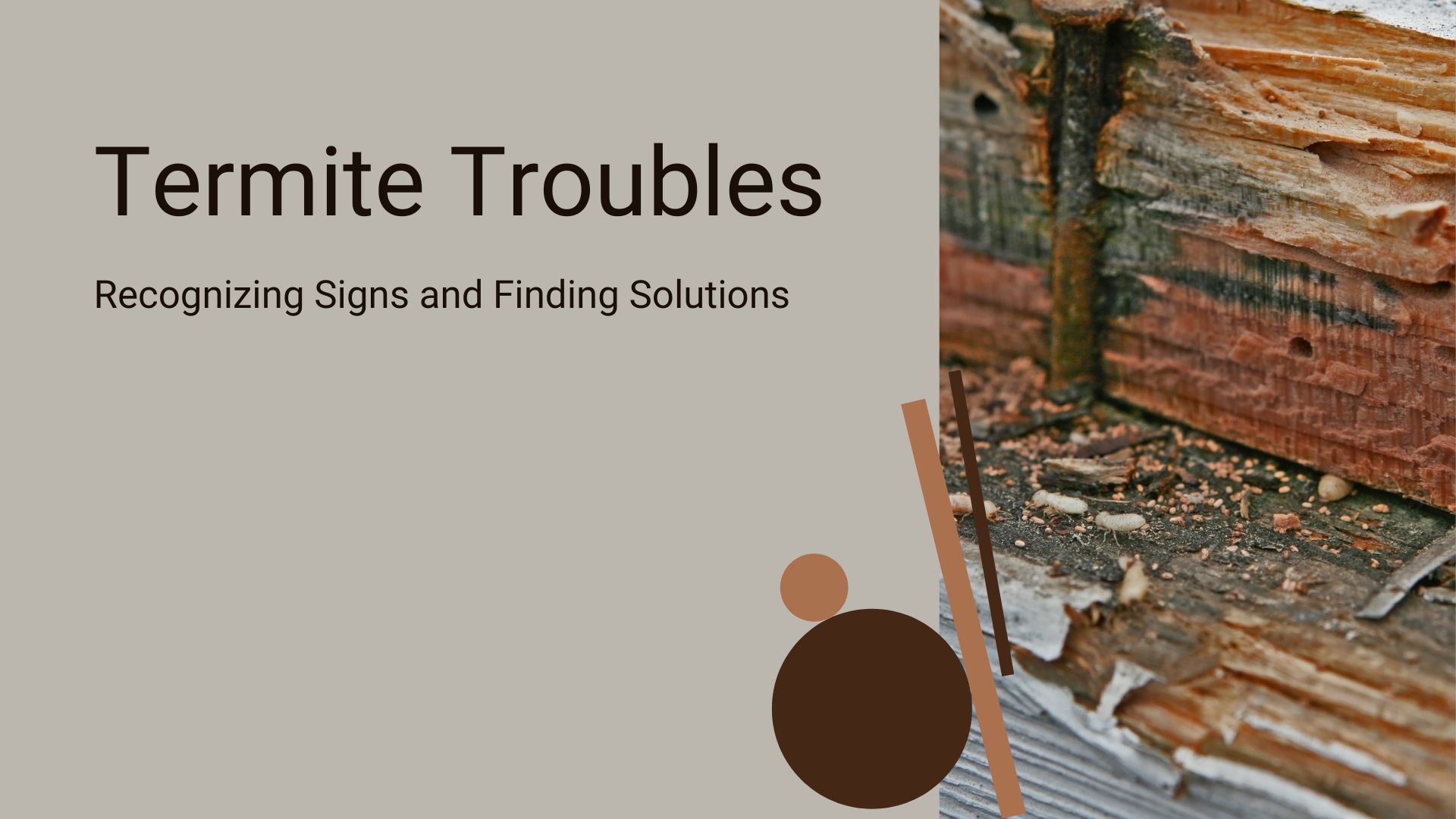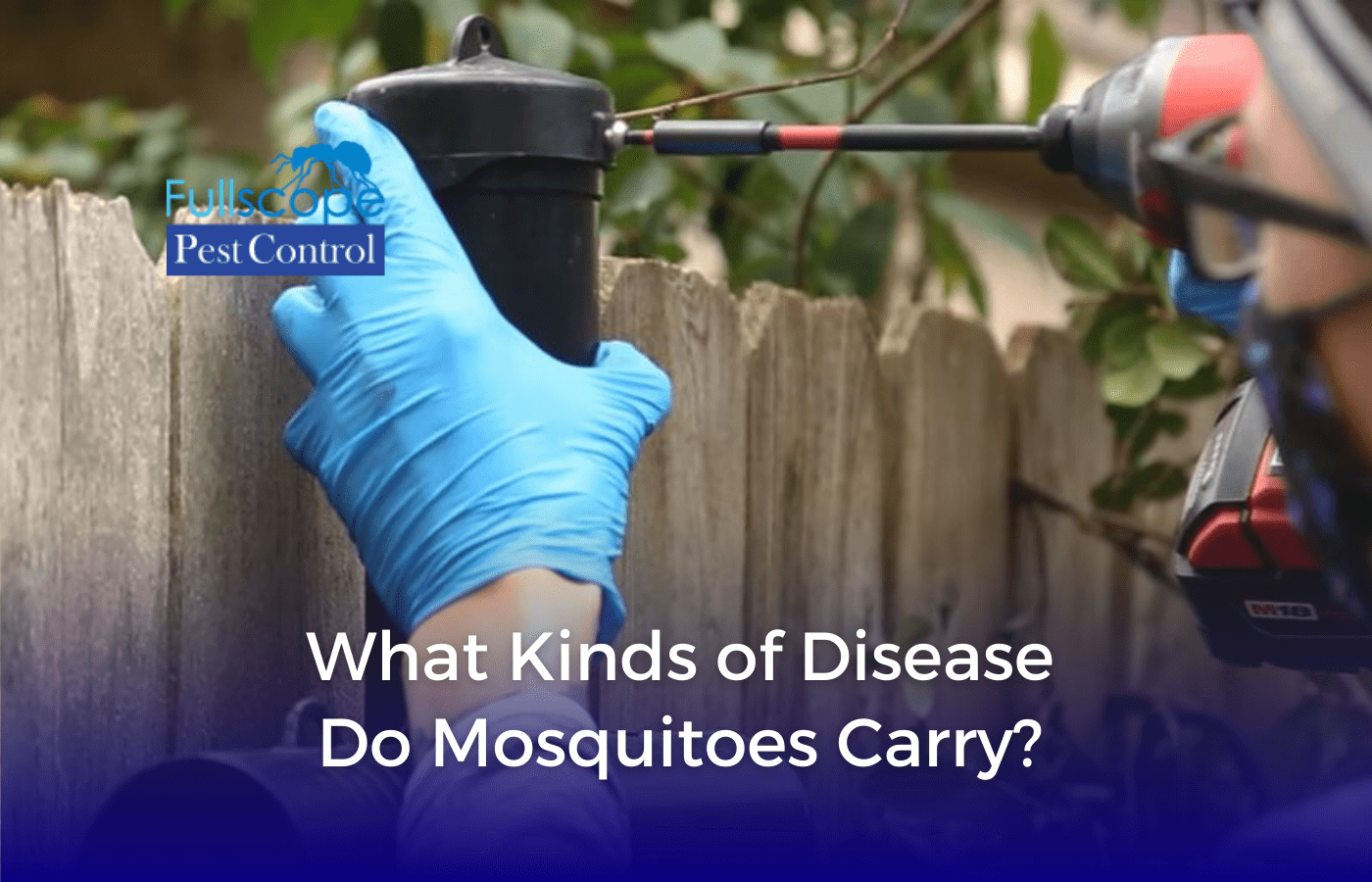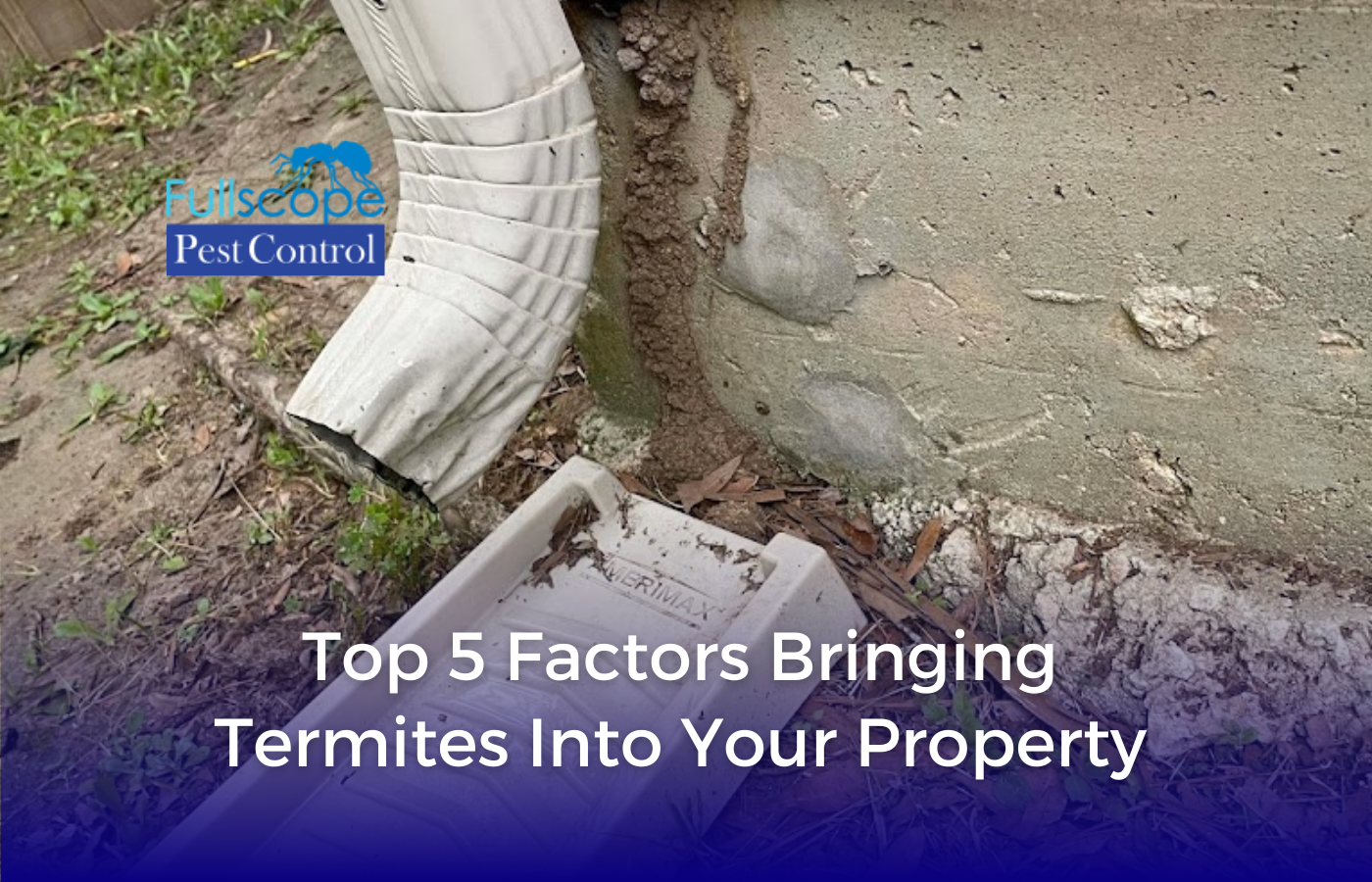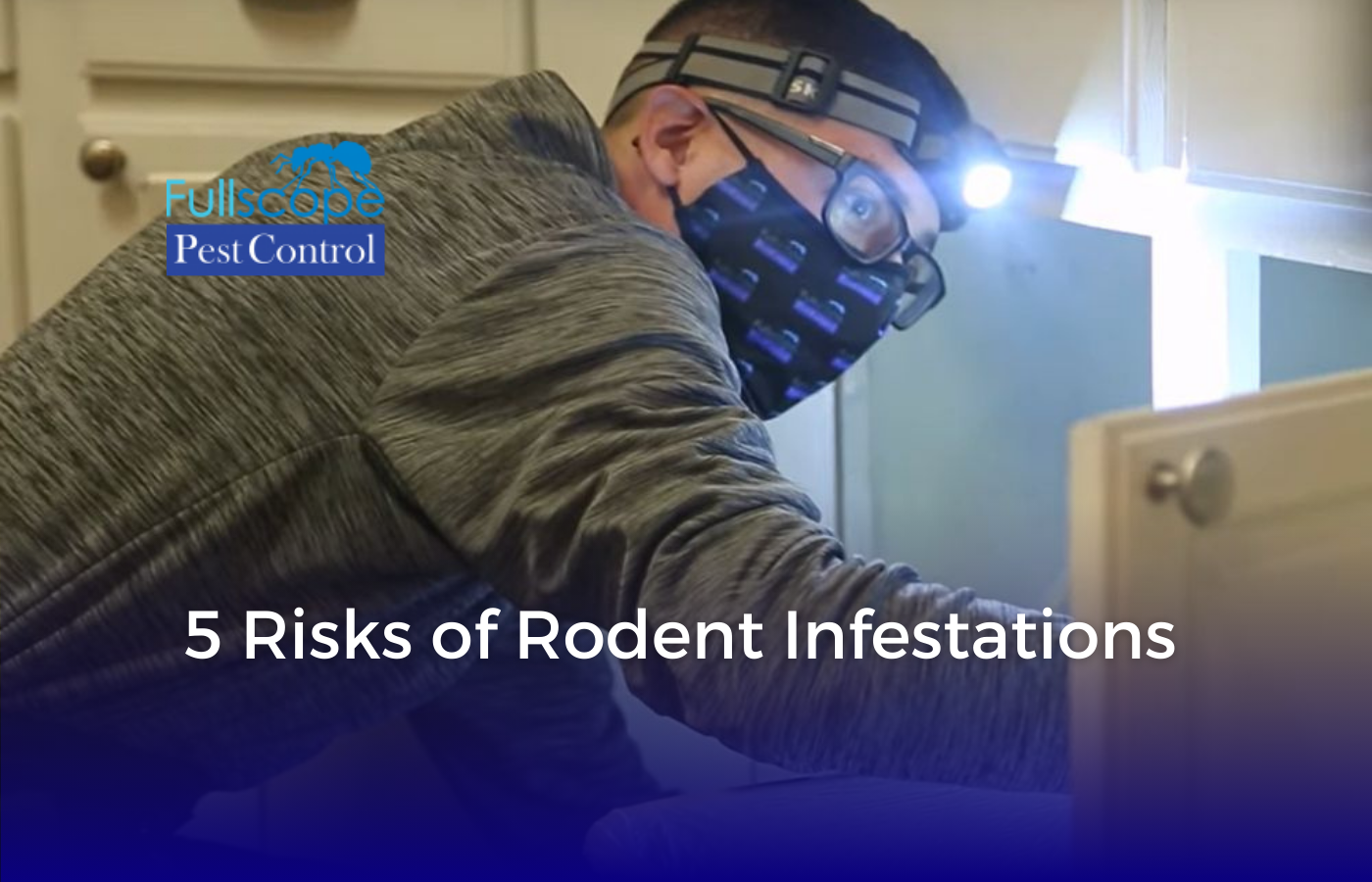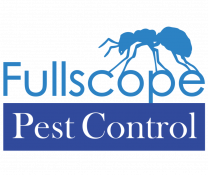
Key Highlights
- Termites are small insects that can cause significant damage to homes and structures, making it important to be aware of the signs of termite infestation.
- Some common signs of termites in walls include visible mud tubes on exterior walls, hollow-sounding wood surfaces, cracked or bubbling paint, and the presence of termite droppings, known as frass.
- It is crucial to understand termite behavior and the risks associated with termite infestations in order to effectively address the problem.
- Professional inspection and identification by a pest control company is essential for accurately detecting termites and determining the severity of the infestation.
- DIY termite inspection tips can be helpful for homeowners, but it is important to know when to call a professional termite inspector to avoid missing any red flags.
- Effective solutions for termites in walls include chemical treatments, non-chemical termite control methods, and preventative measures to avoid future infestations.
Introduction
Termite infestations can be a homeowner’s worst nightmare. These small insects have a voracious appetite for wood, and if left unchecked, they can cause severe damage to the structure of a building. Termites often go undetected until the damage is already significant, making it essential to be aware of the signs of termites in walls. In this blog, we will explore the early warning signs of termite infestations, understand termite behavior and the risks they pose, discuss professional inspection and identification, provide DIY termite inspection tips, and explore effective solutions for termites in walls.
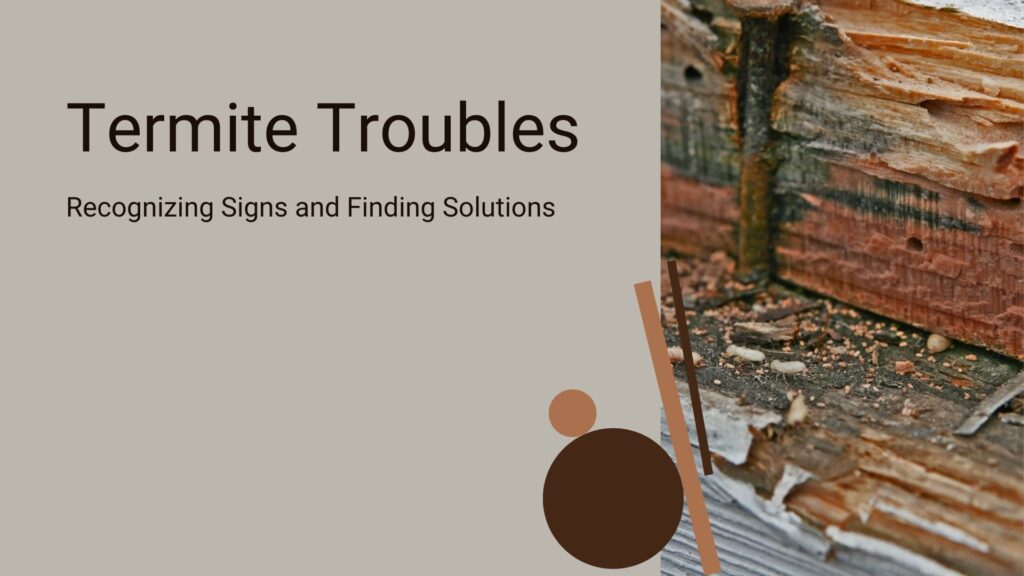
How can you tell if you have termites in your wall?
Indications of termites in your wall include hollow-sounding wood when tapped, discarded wings near windows, mud tunnels on exterior walls, and small holes in the wood. If you notice any of these signs, it’s crucial to seek professional help promptly to address the termite infestation effectively.
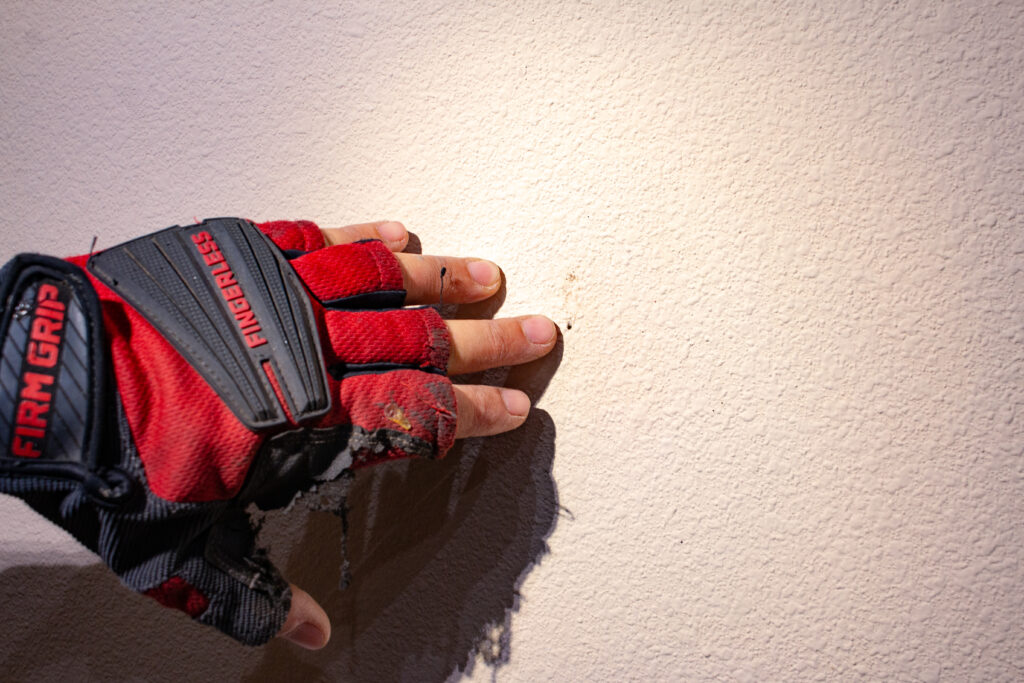
Early Warning Signs of Termites in Walls
Early detection of termite infestations in walls is crucial for preventing further damage. There are several signs to watch out for that may indicate the presence of termites. Visible mud tubes on exterior walls are a common sign of a termite infestation. These shelter tubes, which are about the width of a pencil, are created by subterranean termites as they travel between their colony and a food source. Another sign to look out for is a hollow sound when tapping on wood surfaces. This hollow sound could indicate termite damage within the wood. Additionally, cracked or bubbling paint and the presence of frass, which are termite droppings, can also be indicators of termite activity within walls.
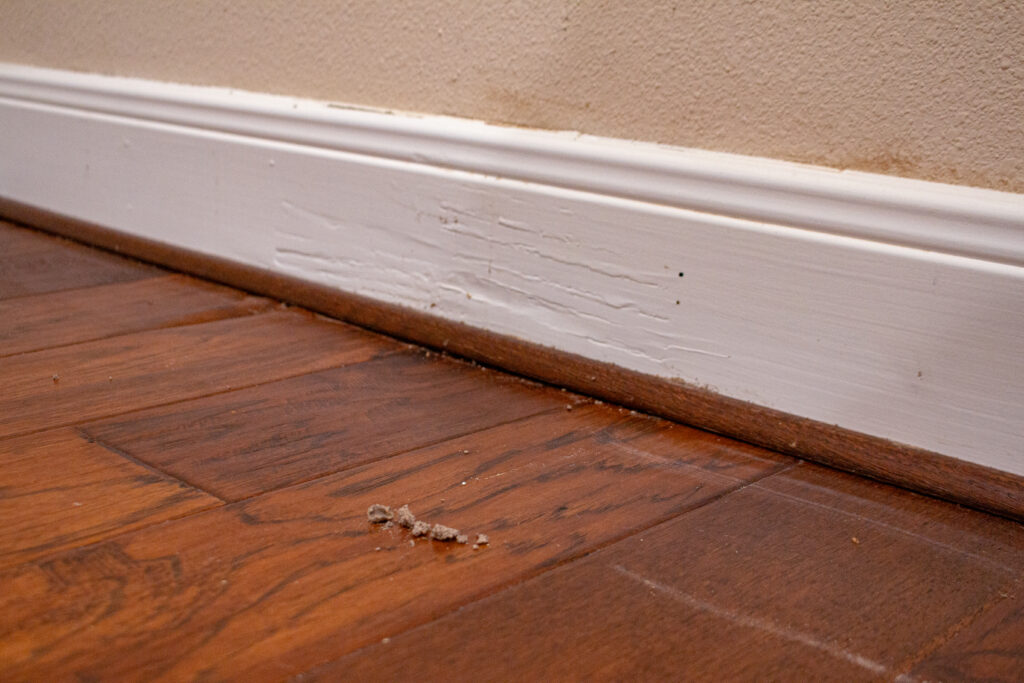
Visible Mud Tubes on Exterior Walls
Visible mud tubes on exterior walls are a telltale sign of a termite infestation. These shelter tubes, also known as mud tunnels, are created by subterranean termites to provide protection and moisture as they travel between their colony and a food source. Here are some key points to understand about mud tubes:
- Mud tubes are typically about the width of a pencil and can be found on the exterior foundation walls of a building.
- Subterranean termites use these tubes to travel from the ground to wooden structures, such as the framing of a house.
- The presence of mud tubes indicates an active termite infestation and should be addressed immediately.
- It is important to note that removing mud tubes alone will not eliminate the termite problem, as the colony itself must be treated to prevent further damage.
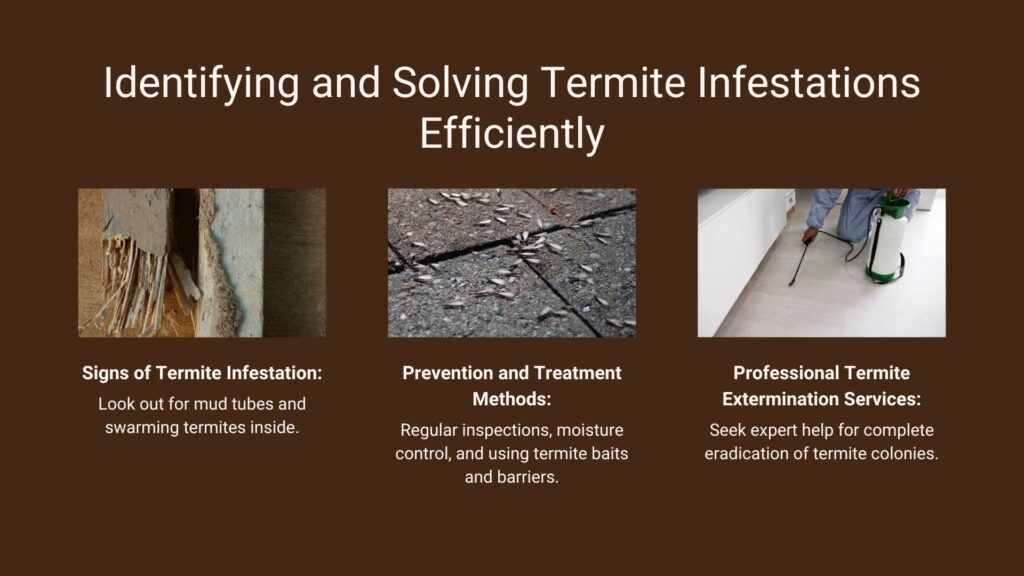
Hollow-Sounding Wood Surfaces
When inspecting your walls for termite infestations, tapping on wood surfaces can provide valuable information. If the wood emits a hollow sound, it could indicate termite damage within the structure. Termites feed on the cellulose found in wood, hollowing it out as they consume it. Here are a few key points to consider:
- A hollow sound when tapping on wood surfaces suggests that termites have eaten away at the wood, causing significant damage.
- It is important to compare the sounds of different walls to ensure that the hollow noise is unique to the wall being tested.
- If extensive termite damage has occurred, the walls may crumble or show signs of instability when pressure is applied.
- If hollow-sounding wood surfaces are discovered, it is crucial to seek professional help to assess the extent of the infestation and determine the necessary steps for treatment and repair.
Cracked or Bubbling Paint
Cracked or bubbling paint on walls can be an indication of termite activity. Termites require moisture to survive, and as they inhabit the interior of walls, they may bring moisture with them. This moisture can cause the paint to crack, bubble, peel, or flake off. Here are a few key points to consider:
- Cracked or bubbling paint can be a result of water damage, but it can also be a sign of a termite infestation.
- If you notice these signs along with other indicators of termite activity, such as the presence of mud tubes or hollow-sounding wood, it is important to seek professional assistance.
- It is crucial to address a termite infestation promptly to prevent further damage to the structure of the building.
Frass: Termite Droppings as an Indicator
Frass, which refers to termite droppings, can be a useful indicator of termite activity within walls. As termites consume wood, they produce frass that resembles small pellets or sawdust. Here are a few key points to consider:
- Finding frass near the bottom of walls, on top of baseboards, or where the wall meets the floor can be a sign of termite activity.
- Termite droppings are a combination of wood shavings, dirt, and termite excrement.
- If you find frass along with other signs of termite damage, such as mud tubes or hollow-sounding wood, it is important to consult a pest control professional for an accurate assessment of the infestation and appropriate treatment options.
- It is crucial to address a termite infestation promptly to prevent further damage to the structure of the building.
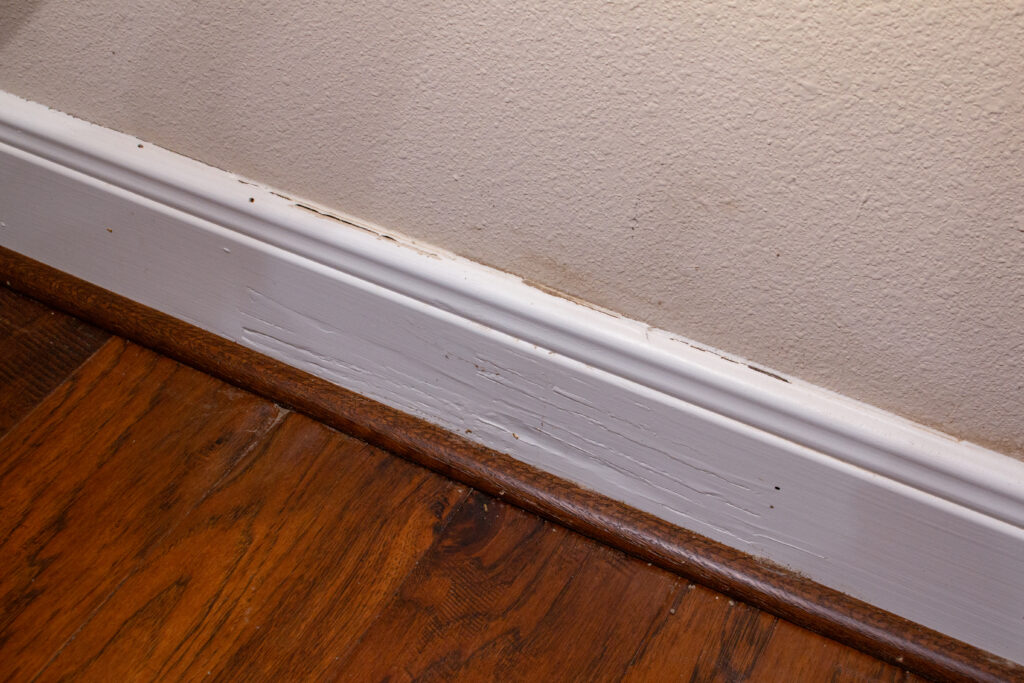
Understanding Termite Behavior and Risks
Understanding termite behavior and the risks associated with termite infestations is essential for effectively dealing with the problem. Termites have a complex lifecycle and certain behaviors that contribute to the damage they cause. Here are a few key points to understand:
- Termites live in colonies and have different castes, including workers, soldiers, and swarmers.
- They feed on cellulose-containing materials such as wood, paper, and plant debris.
- Termite infestations can lead to significant structural damage and financial losses if left untreated.
- Early detection and prompt treatment are crucial for minimizing the risks associated with termite infestations.
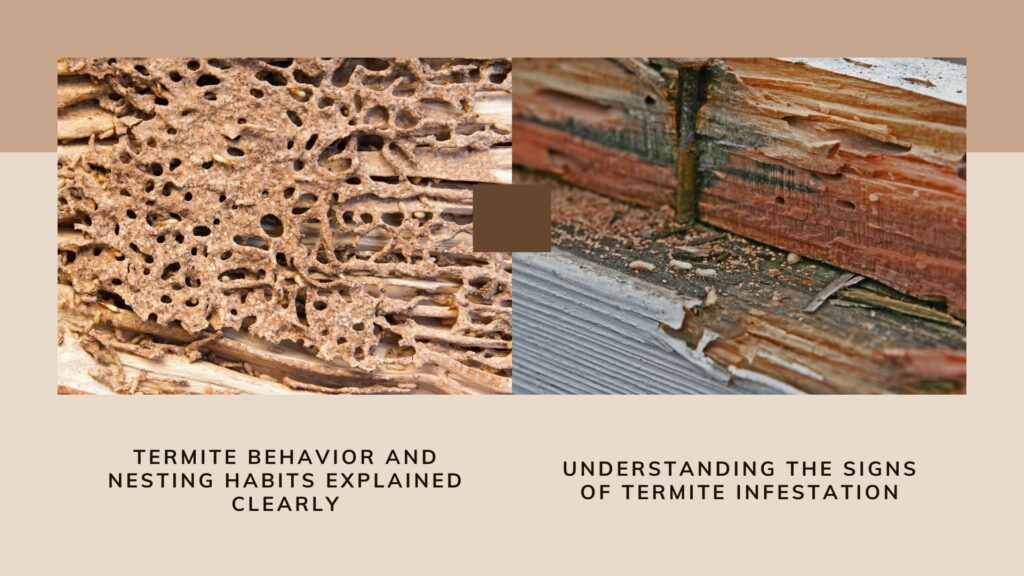
The Lifecycle of Termites
Termites have a complex lifecycle that involves different castes and stages. Understanding their lifecycle can help in identifying and addressing termite infestations. Here are a few key points to consider:
- Termite colonies start with a mating pair of winged termites that establish a new colony.
- The queen termite lays eggs, which develop into worker termites responsible for feeding the colony.
- Soldiers protect the colony from threats, while swarmers are winged termites that leave the colony to establish new colonies elsewhere.
- Identifying termite swarmers can be a sign of an active infestation and the need for immediate treatment.
- Professional inspection and identification are necessary to accurately assess the severity of the infestation and determine the appropriate course of action.
Different Types of Termites and Their Behaviors
There are different species of termites, each with its own behaviors and preferences. It is important to understand these differences to effectively address a termite problem. Here are a few key points to consider:
- Subterranean termites are the most common type and live in underground colonies.
- Drywood termites infest wood and do not require contact with the soil.
- Dampwood termites are attracted to moist wood and often infest decaying or water-damaged structures.
- Knowing the specific species of termites infesting a property and their preferred food source can help determine the best treatment approach.
- Professional pest control companies have the expertise to identify termite species and develop appropriate treatment plans based on their behavior and preferences.
How Termites Cause Damage Over Time
Termites can cause significant damage to wooden structures over time if left untreated. Understanding how termites cause this damage is essential for effectively addressing infestations. Here are a few key points to consider:
- Termites feed on cellulose, which is found in wood and other organic materials.
- They tunnel through wooden structures, hollowing them out as they consume the cellulose.
- Over time, this can weaken the structural integrity of the wood, leading to potential collapses or other serious damage.
- It is crucial to address termite infestations promptly to prevent further deterioration of wooden structures.
- Regular inspections and preventative measures can help homeowners identify and address termite problems before significant damage occurs.
Professional Inspection and Identification
Professional inspection and identification are essential for accurately detecting termites and assessing the severity of an infestation. Here are a few key points to consider:
- A professional termite inspector has the expertise and tools to identify signs of termite activity that may not be visible to the untrained eye.
- They can determine the extent of a termite infestation and provide appropriate recommendations for treatment.
- Professional inspection is particularly important when dealing with termite infestations in walls, as the damage may not be readily apparent.
- Early detection and prompt treatment can help prevent further damage and minimize the risks associated with termite infestations.
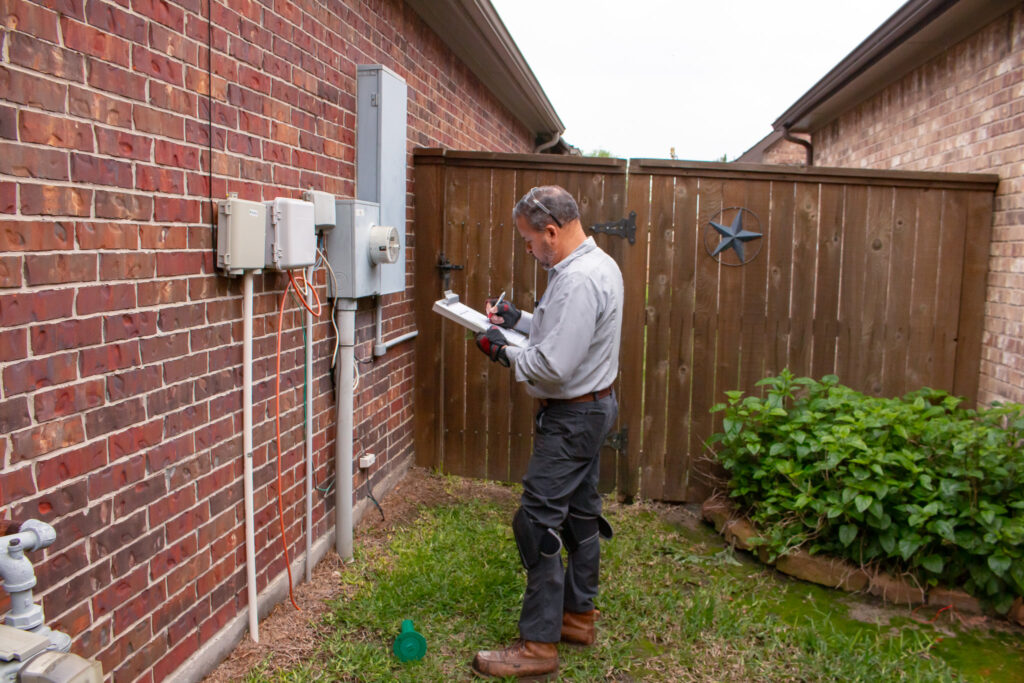
The Role of a Professional Termite Inspector
A professional termite inspector plays a crucial role in accurately assessing the severity of a termite infestation and determining the appropriate course of action. Here are a few key points to consider:
- A pest control company typically employs professional termite inspectors who are trained to identify the signs of termite activity.
- They have the knowledge and experience to determine the severity of the infestation and the potential risks it poses.
- Professional inspectors can detect live termites, even if they are not visible to the homeowner.
- Their assessment and recommendations are based on their expertise and may include treatment options and preventative measures.
- Consulting a professional termite inspector ensures a thorough and accurate evaluation of the infestation, leading to effective treatment and control measures.
Tools and Techniques for Detecting Termites
Professional termite inspectors use various tools and techniques to detect termite activity. Here are a few commonly used tools and techniques:
| Tool or Technique | Description |
| Moisture meters | These devices measure moisture levels in wood, which can indicate termite activity. |
| Termite probes | Inspectors use these tools to tap and probe wood surfaces, looking for hollow sounds and signs of termite damage. |
| Fiber optic scopes | These scopes allow inspectors to see inside walls and other inaccessible areas to search for termite activity. |
| Thermal imaging cameras | These cameras can detect temperature variations that may be indicative of termite activity, such as heat generated by termite nests. |
| Termite-sniffing dogs | Specially trained dogs can detect the presence of termites by sniffing for their unique scent. |
By utilizing these tools and techniques, professional termite inspectors can accurately detect termite activity, assess the severity of an infestation, and develop appropriate treatment plans.
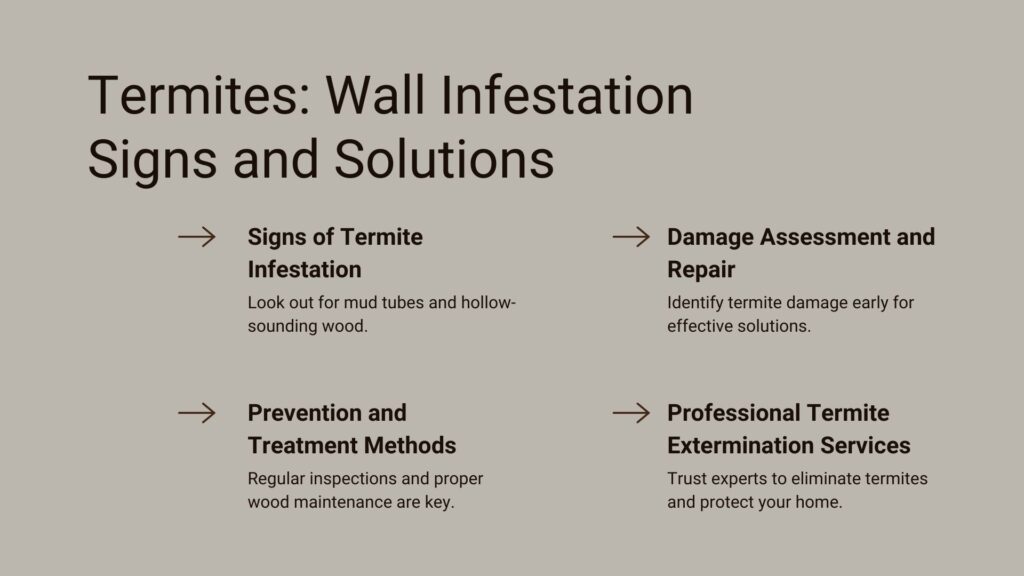
Interpreting Signs of Termite Infestations Accurately
Interpreting signs of termite infestations accurately is crucial for determining the appropriate treatment and preventing further damage. Here are a few key points to consider:
- It is important to consult a professional termite inspector to accurately interpret the signs of termite activity.
- Some signs, such as mud tubes or frass, may indicate an active infestation, while others may be remnants of a previous infestation.
- Professional interpretation helps ensure that the right treatment methods are employed and that any hidden or ongoing termite activity is addressed.
- Delaying treatment or misinterpreting signs of termite infestations can lead to further damage and increased costs.
- Regular inspections and preventative measures can help homeowners stay vigilant and identify termite problems before they escalate.
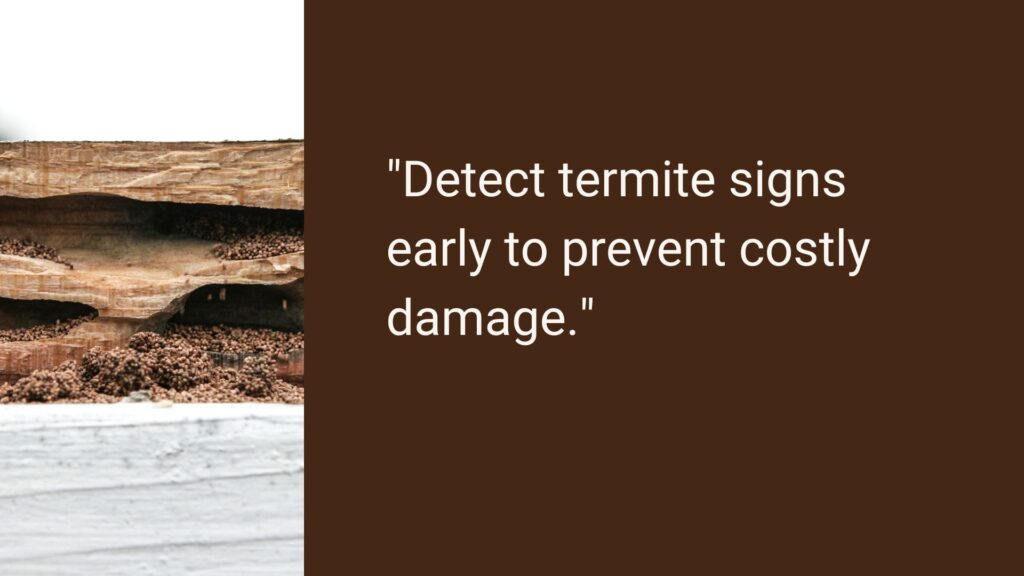
DIY Termite Inspection Tips
While professional inspection is recommended for accurate detection of termite infestations, there are some DIY methods that homeowners can employ to supplement their efforts. Here are a few key tips for DIY termite inspection:
- Inspect the exterior of your home for visible signs of termite activity, such as mud tubes and damaged wood.
- Check for hollow-sounding wood by tapping on surfaces throughout your home.
- Examine areas where moisture is present, as termites are attracted to damp environments.
- Clear away any debris or wood piles near your home, as they can attract termites.
- It is important to exercise caution and follow safety measures when conducting a DIY termite inspection, and to consult a professional if signs of termite activity are found.
Safety Measures and Precautions
When conducting a DIY termite inspection, it is important to prioritize safety and take necessary precautions. Here are a few key safety measures to consider:
- Wear protective clothing, such as gloves and a mask, to avoid direct contact with potentially harmful substances.
- Use caution when inspecting areas that may be structurally compromised due to termite damage.
- Beware of potential hazards, such as electrical wiring or sharp objects, when accessing wall voids or crawl spaces.
- Avoid disturbing termite-infested areas, as this can cause termites to retreat and make it more difficult to detect the extent of the infestation.
- If you are unsure or uncomfortable with conducting a DIY termite inspection, it is recommended to consult a professional termite inspector for a thorough assessment.
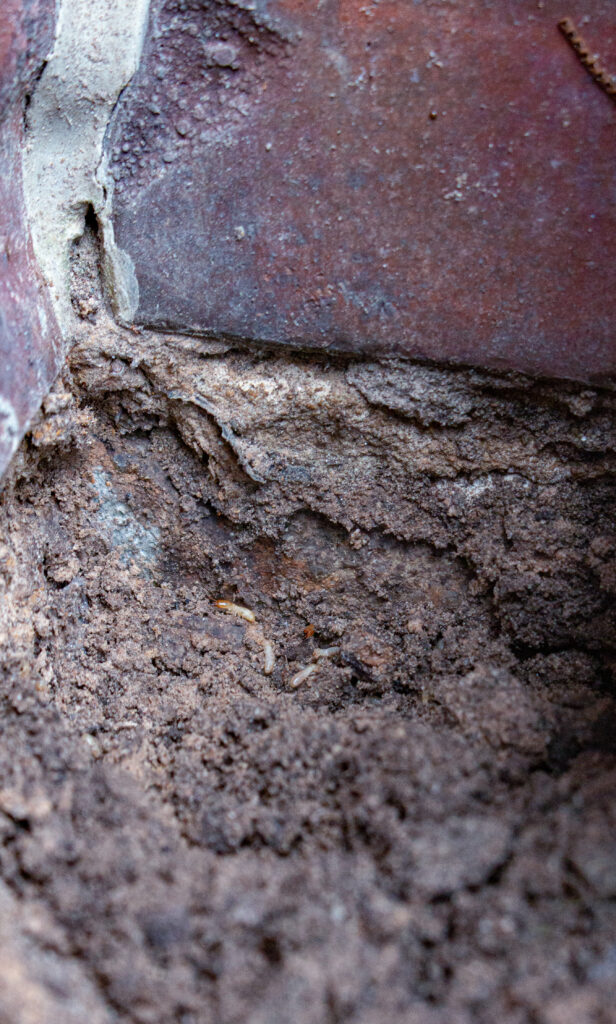
Identifying Common Termite Entry Points
Termites can enter a building through various entry points, and identifying these common entry points is crucial for preventing infestations. Here are a few key entry points to be aware of:
- Cracks or gaps in the foundation of a building can provide easy access for termites.
- Moisture-prone areas, such as leaky pipes or clogged drains, can attract termites and create favorable conditions for infestations.
- Wooden structures that come into direct contact with the soil, such as deck posts or door frames, can serve as entry points for subterranean termites.
- Crevices around windows and doors can provide termites with an entryway into a building.
- Regular inspection and maintenance of these common entry points can help homeowners identify and address vulnerabilities before termites infiltrate.
When to Call a Professional: Red Flags in DIY Inspections
While DIY termite inspections can be informative, it is essential to know when to call a professional termite inspector. Here are a few red flags that may indicate the need for professional assistance:
- Continued presence of live termites or signs of termite activity, even after conducting a thorough DIY inspection.
- Visible damage to wooden structures that suggests an extensive infestation or structural damage.
- Difficulty accessing certain areas or identifying the extent of the infestation without professional tools and expertise.
- Concerns about misinterpretation of signs or uncertainties about treatment options.
- When in doubt or when signs of termite activity persist, it is recommended to consult a professional termite inspector to accurately assess the situation and determine the necessary steps for treatment and control.
Effective Solutions for Termites in Walls
Addressing termite infestations in walls requires effective treatment methods. Here are a few key solutions to consider:
- Chemical treatments, such as termiticides, can be applied to affected areas to eliminate termites and prevent future infestations.
- Non-chemical termite control methods, such as the use of nematodes or termite baits, can also be effective in eradicating termite colonies.
- Preventative measures, such as maintaining proper moisture control, removing wood debris, and sealing entry points, can help avoid future infestations.
- It is important to consult a professional pest control company to determine the most appropriate treatment method based on the severity of the infestation and the specific circumstances.
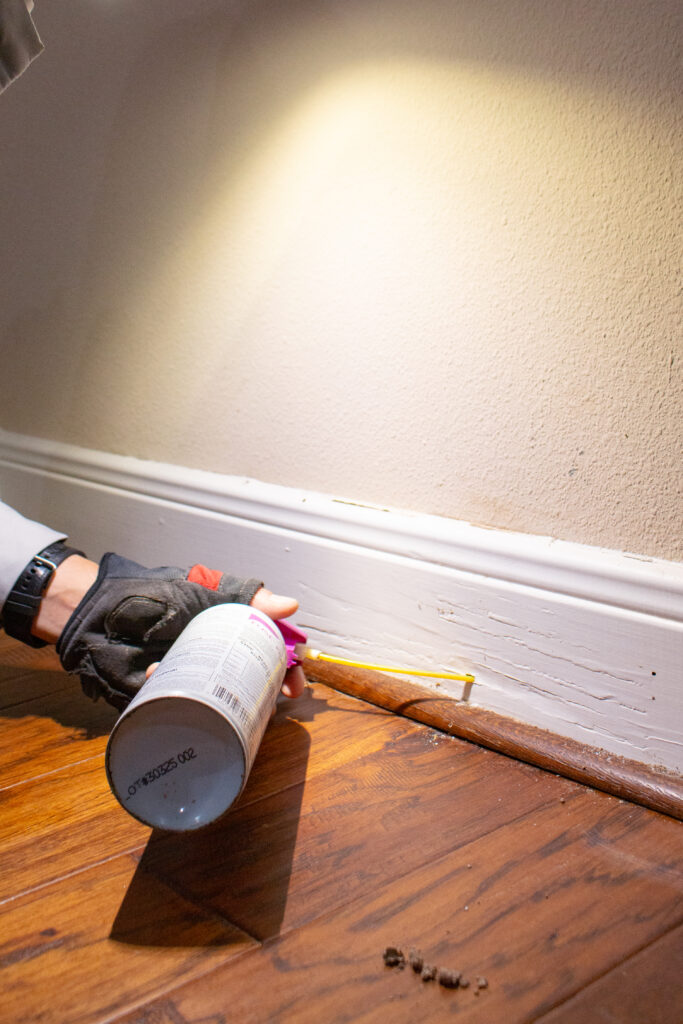
Chemical Treatments: Pros and Cons
Chemical treatments, such as termiticides, are commonly used to eliminate termites in walls. Here are a few pros and cons to consider:
Pros:
- Chemical treatments can effectively eliminate termites and prevent future infestations.
- Termiticides can be applied directly to affected areas, ensuring thorough coverage.
- Professional pest control companies have access to specialized chemicals and application techniques for optimal results.
Cons:
- Chemical treatments may require multiple applications and ongoing monitoring to ensure long-term effectiveness.
- Some termiticides contain pesticides that may pose health and environmental risks.
- Chemical treatments may not be suitable for certain situations, such as homes with occupants who are sensitive to chemicals.
It is important to weigh the pros and cons of chemical treatments and consult a professional pest control company to determine the most appropriate course of action.
Non-Chemical Termite Control Methods
Non-chemical termite control methods offer alternative solutions for addressing termite infestations in walls. Here are a few effective non-chemical methods:
- Nematodes: These microscopic worms can be applied to affected areas to target and kill termites. Nematodes are natural predators of termites and can provide effective control in certain situations.
- Termite baits: These bait systems consist of stations that are strategically placed around the property. The baits contain substances that attract termites, which then consume the bait and carry it back to the colony, leading to its eradication.
Non-chemical termite control methods can be environmentally friendly and offer viable options for homeowners seeking alternative solutions. It is important to consult a professional pest control company to determine the most appropriate non-chemical method for the specific termite infestation.
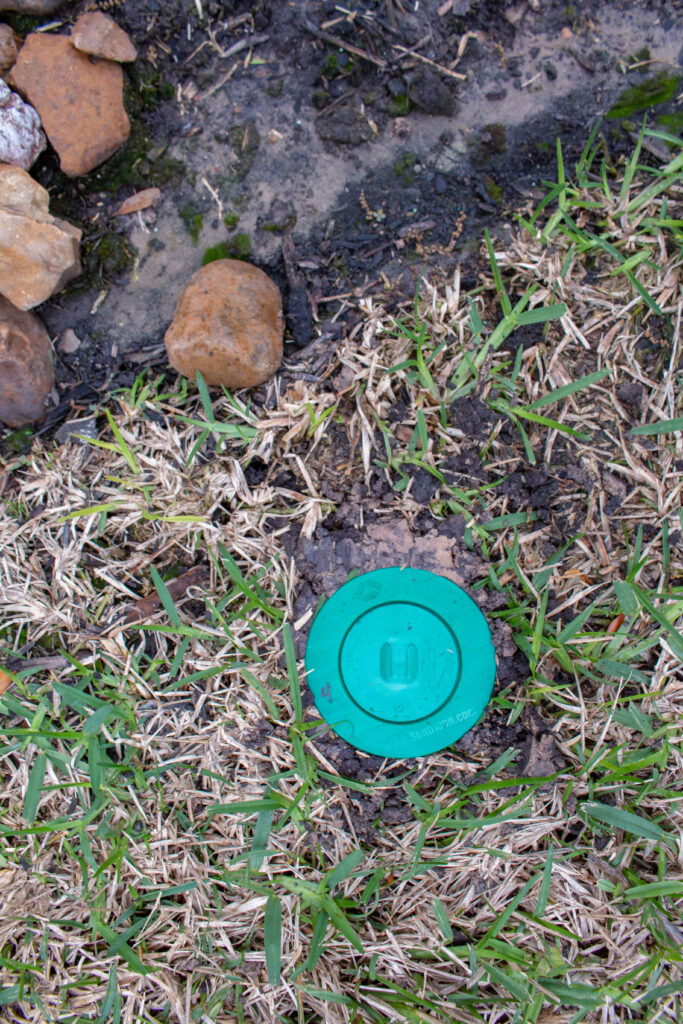
Preventative Measures to Avoid Future Infestations
Preventing future termite infestations is essential for protecting your home and avoiding costly damage. Here are a few key preventative measures to consider:
- Maintain proper moisture control by addressing water leaks and ensuring proper drainage away from the foundation.
- Remove wood debris, such as firewood stacks or fallen trees, from close proximity to the house.
- Seal entry points, such as cracks or gaps in the foundation or around windows and doors.
- Regularly inspect wooden structures for signs of damage or termite activity.
- Consider professional termite prevention treatments, such as the application of termiticides or the installation of termite barriers.
By implementing these preventative measures, homeowners can reduce the risk of future termite infestations and safeguard their properties from termite damage.
Conclusion
In conclusion, early detection of termite infestations is crucial in preventing extensive damage to your property. Understanding the signs and behaviors of termites can help you take swift action. Whether opting for professional inspections or DIY measures, prompt response is key. Effective solutions, such as chemical treatments or non-chemical control methods, can eliminate termites in walls and prevent future infestations. Remember, safeguarding your property against termites requires proactive measures and vigilance. If you suspect a termite issue, don’t hesitate to seek professional assistance. For expert guidance and termite control services, get in touch with us today.

